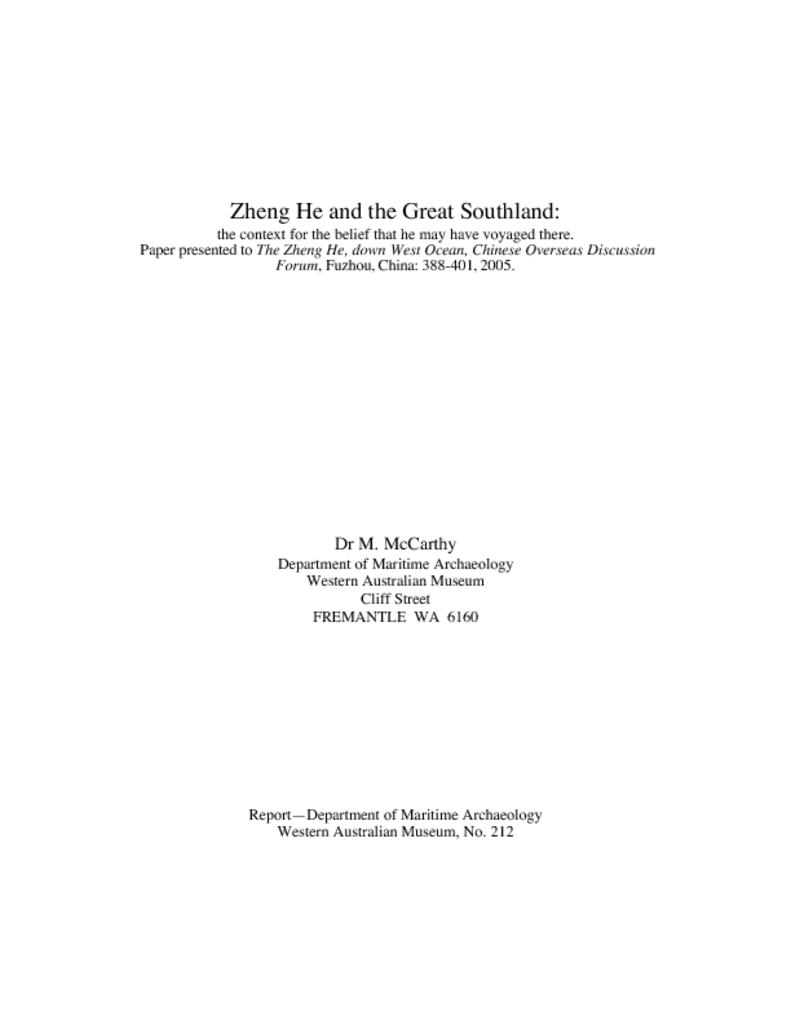Zheng He and the Great Southland
Author/s M. McCarthy
Year of publication 2006
Report Number: 212
Introduction
It has been said of Australia—a land occupied by its own indigenous people for 40,000 years at least—that its campfires ‘were first lit in a past before time’. (Horton, 1997, xii). Not knowing that their land even existed, around two thousand-five-hundred years ago the Greek scholar Pythagoras argued that, as the earth was a sphere, the lands of the northern hemisphere had to be balanced by a large southern land mass. Three centuries later, this theory appeared envisioned in the globe shown below and in a Roman visualisation of the same notion produced another two centuries later.
A century further on from these depictions—apparently as a result of intelligence that was filtering through to him from travellers to Asia—Ptolemy of Alexandria extended Africa and Asia south to meet the hypothetical southern land mass.
Much was written on the subject of a vast legendary mass in the south that came later to be known as Terra Australis Incognita (Latin: literally—unknown southern land) (Wood, 1922; Schilder, 1976). The nature of southern seas, the location and form of the land itself, and the customs and appearance of its inhabitants were to become one of the greatest of all the European unsolved mysteries. These unknown lands were reputed—by virtue of their hypothetically-opposite and balancing nature to the ordered and familiar world in the north—to be the home of strange beings and grotesque animals; of lands surrounded by seas filled with horrendous creatures.
The European world retreated into what has been called its ‘Dark Ages’ after the fall of the Roman Empire and as a result, objective scholarly discourse about unknown regions to the south and east was not to re-emerge in Europe until the 13th Century. The emergence of Genghis Khan and the decision of the Catholic Pope to develop an overland contact with him were two major influences, eventually leading to the travels of the Polo family to what Europeans called the ‘Far East’. The Polo family were Venetian merchants who travelled overland to his court, eventually returning home with tales of his great empire. They had also been told of rich lands south and east of India with whom mariners were in regular contact. Java was of special interest with its apparently vast riches, multitudinous shipping and fabulous spices. Marco Polo, the best known of his family, also studied Chinese and Arab charts, and his reports on these matters are credited with having ‘revolutionized geographical conceptions’ in Europe about the eastern region (Wood, 1922: 36).
